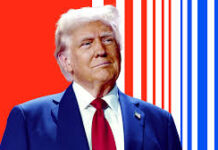Donald Trump’s relationship with the financial markets has been a contentious and polarizing topic, characterized by a mix of bold claims, erratic policy decisions, and a fundamental misunderstanding of market dynamics. While Trump often touts the stock market as a barometer of his success, his actions and rhetoric frequently disrupt the very stability that markets crave. This article explores how Trump’s approach to economic policy, trade, and public communication reveals a limited understanding of the complexities that underpin financial markets.
Donald Trump has consistently equated stock market performance with economic success, using it as a political tool to bolster his image. During his presidency, he repeatedly pointed to record highs in the Dow Jones Industrial Average and S&P 500 as evidence of his economic prowess. However, this simplistic view overlooks the multifaceted nature of markets, which are influenced by global economic conditions, monetary policy, and investor sentiment.
For instance, many economists argue that the strong market performance during Trump’s first term was largely a continuation of trends established during the Obama administration’s post-recession recovery5. Trump inherited an economy with low unemployment and steady growth, yet he framed these achievements as uniquely his own. This narrative ignores the broader context of market cycles and structural factors that extend beyond any single administration.
Moreover, Trump’s silence during market downturns further underscores his selective understanding. When markets faltered—such as during trade war escalations or Federal Reserve disputes—Trump often avoided addressing these declines, preferring instead to shift focus to unrelated topics9. This inconsistency highlights a superficial grasp of market dynamics.
Financial markets thrive on predictability and stability—qualities that were often absent during Trump’s tenure. His penchant for abrupt policy announcements via Twitter created significant uncertainty for investors. For example:
- In 2019, Trump’s sudden announcement of tariffs on $500 billion worth of Chinese goods caused the S&P 500 to drop 4% in just two days1.
- Similarly, his attacks on Federal Reserve Chairman Jerome Powell led to sharp market declines. A study by Merrill Lynch found that days with high volumes of Trump tweets (over 35) were statistically associated with negative stock market returns16.
These episodes illustrate how Trump’s impulsive communication style frequently undermined investor confidence. Markets are forward-looking and react not only to current events but also to anticipated risks. By introducing unpredictability into trade policy and monetary discussions, Trump amplified volatility—a condition detrimental to long-term investment planning.
Trump’s trade policies further exemplify his limited understanding of economic interdependence. His administration’s imposition of tariffs on thousands of products sparked retaliatory measures from trading partners, disrupting global supply chains and increasing costs for American businesses and consumers.
The semiconductor industry provides a stark example. After Trump criticized Taiwan Semiconductor Manufacturing Company (TSMC) and questioned U.S. commitments to Taiwan’s defense, TSMC’s stock plummeted by 15%, dragging down the broader semiconductor index by 10%1. This incident underscores how targeted rhetoric can have outsized consequences for specific sectors.
While Trump argued that tariffs would protect domestic industries and reduce trade deficits, many economists warned that such measures would stifle growth and exacerbate inflation23. Indeed, Goldman Sachs projected that Trump’s proposed universal tariffs could harm U.S. GDP if implemented during a second term2. These warnings reflect the broader economic consensus that protectionism often backfires in an interconnected global economy.
Another key issue is Trump’s failure to align his policies with fundamental economic principles. Markets respond not only to fiscal policies like tax cuts but also to structural reforms that promote sustainable growth. While Trump’s Tax Cuts and Jobs Act (TCJA) temporarily boosted corporate profits and stock buybacks, its long-term benefits remain questionable5. Critics argue that the tax cuts disproportionately benefited wealthy individuals and corporations without addressing underlying issues like income inequality or infrastructure investment.
Furthermore, Trump’s deregulation agenda focused heavily on short-term gains for specific industries, such as fossil fuels and banking35. While these policies provided temporary tailwinds for certain sectors, they often ignored broader societal costs like environmental degradation or financial instability.
The so-called “Trump Trade,” which describes market behavior in anticipation of pro-business policies under a Trump presidency, highlights both opportunities and risks associated with his leadership style37. On one hand, investors welcomed deregulation and tax cuts as drivers of corporate profitability. On the other hand, concerns about tariffs, immigration restrictions, and geopolitical tensions tempered enthusiasm.
For example:
- Energy companies like ExxonMobil stood to benefit from Trump’s emphasis on fossil fuel production3.
- Conversely, global firms reliant on international supply chains faced significant headwinds due to protectionist trade policies3.
This dichotomy underscores the uneven impact of Trump’s policies across industries—a reflection of their reactive rather than strategic nature.
As Trump embarks on a second term in 2025, his evolving rhetoric suggests an even more populist economic agenda. Promises of universal tariffs and aggressive antitrust measures signal potential challenges for both domestic businesses and global markets12. Additionally, strained relationships with corporate leaders—many of whom have distanced themselves from Trump—could hinder collaboration on critical economic initiatives1.
Investors remain cautious about these developments. While some sectors may benefit from reduced regulations or tax incentives, the broader implications of protectionism and political polarization could outweigh these gains. Markets are already pricing in heightened risks associated with inflationary pressures and supply chain disruptions under renewed tariff regimes3.
Donald Trump’s approach to financial markets reflects a fundamental misunderstanding of their complexity and interconnectedness. His reliance on simplistic metrics like stock market highs ignores deeper economic realities, while his erratic policy decisions amplify volatility rather than fostering stability. From trade wars to impulsive tweets, Trump has consistently prioritized short-term political gains over long-term economic sustainability.
As he navigates his second term, the stakes are higher than ever. Investors must grapple with the duality of potential benefits from deregulation alongside significant risks posed by protectionist policies and unpredictable leadership. Ultimately, sustainable market growth requires thoughtful policymaking rooted in economic fundamentals—a lesson that remains elusive in Trump’s playbook.
By Cecil Martin
Citations:
- https://insights.som.yale.edu/
insights/trump-is-already- rattling-the-stock-market - https://www.politico.com/news/
2024/09/05/trump-economy- 00177543 - https://www.cbsnews.com/news/
trump-stocks-economy- inflation/ - https://www.bbc.com/news/
world-45827430 - https://www.investopedia.com/
donald-trump-presidency- economic-impact-8666666 - https://pmc.ncbi.nlm.nih.gov/
articles/PMC7065837/ - https://www.bankrate.com/
investing/trump-trade/ - https://abcnews.go.com/
Business/trumps-economic- legacy/story?id=74760051 - https://abcnews.go.com/
Politics/president-trump- loves-talk-stock-market/story? id=59652104












